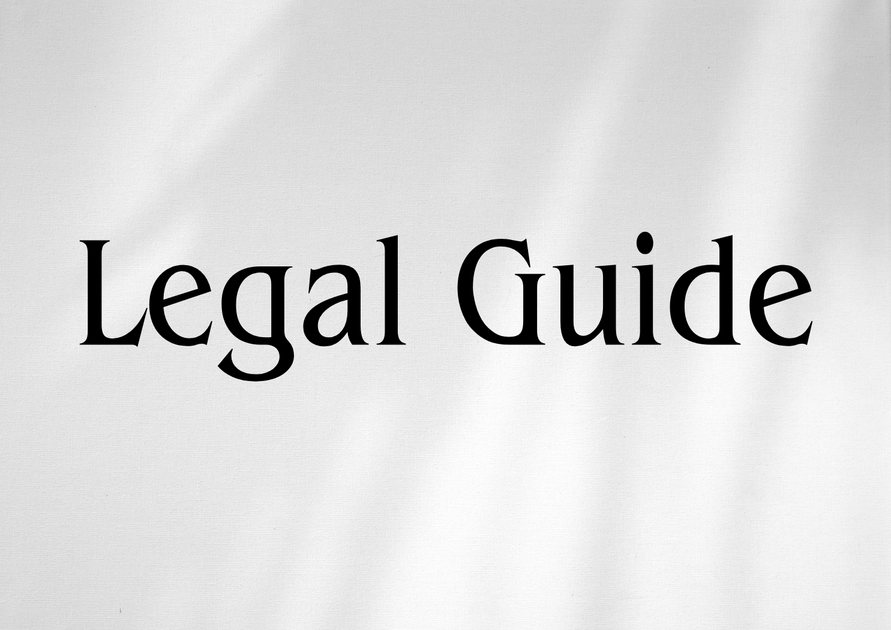Introduction: Navigating Investor and Depositor Protections across Qatari and UAE Jurisdictions
In the rapidly evolving financial landscape of the Gulf, investor and depositor rights have become central to legal compliance and economic security. For organizations and individuals active across Qatar and the United Arab Emirates, understanding the legal frameworks governing financial investments and deposits is essential. This detailed analysis explains the rights of investors and depositors under Qatari law, highlighting areas that are particularly relevant to UAE-based stakeholders, especially in light of UAE law 2025 updates. It presents consultancy-level insights offering practical strategies for risk management, legal compliance, and strategic decision-making, referencing official sources such as the UAE Ministry of Justice and the Federal Legal Gazette. The content aims to support leadership teams, legal practitioners, and compliance officers with actionable knowledge to navigate cross-border opportunities and regulatory expectations.
The legal landscape in both the UAE and Qatar has witnessed significant developments, particularly following economic reforms and the introduction of investor-friendly regulations. As financial transactions become increasingly cross-border, it is vital to understand not only the protections afforded by Qatari law, but also the implications for businesses operating in, or transacting with, the UAE. This article delivers in-depth, authoritative guidance that will help businesses stay ahead of regulatory changes, avoid potential pitfalls, and ensure robust legal compliance.
Table of Contents
- Qatari Legal Landscape Overview
- Core Rights of Investors Under Qatari Law
- Depositor Rights Under Qatari Law
- Risks of Noncompliance and Mitigation Strategies
- Practical Compliance Checklist
- Case Studies and Hypothetical Scenarios
- Conclusion and Forward-Looking Perspective
Qatari Legal Landscape Overview
The Qatari legal system is based on a combination of civil law principles and Islamic law (Sharia). Economic legislation has progressively evolved to foster a secure investment environment, in line with Vision 2030 and international best practices. Key statutes relevant to investors and depositors include:
- Law No. (13) of 2000 Regulation of the Investment of Non-Qatari Capital in Economic Activity (amended by Law No. 1 of 2019)
- Qatar Central Bank Law No. (13) of 2012, as amended by Law No. (20) of 2019
- Qatar Financial Markets Authority Law No. (8) of 2012
- Commercial Companies Law No. (11) of 2015 and subsequent amendments
- Qatar Bankruptcy and Insolvency Law No. (22) of 2017
Over the past decade, reforms have been implemented to increase transparency, enable foreign capital participation, and enhance the mechanisms for legal recourse. The regulatory bodies responsible for enforcement, such as the Qatar Central Bank (QCB) and Qatar Financial Markets Authority (QFMA), coordinate closely to set investor and depositor protection standards. Notably, the Financial Stability and Risk Control Committee, established within the QCB, plays a pivotal role in the proactive development and implementation of risk buffers and consumer protection policies.
Core Rights of Investors Under Qatari Law
Investment Protection Framework
Qatari law articulates a robust investment protection regime, especially following amendments to Law No. 13 of 2000 by Law No. 1 of 2019. Foreign investors are now permitted to own up to 100% of capital in most sectors, subject to regulatory approval. The core rights of investors under Qatari law include:
- Equal treatment between local and foreign investors, confirming the principles of non-discrimination and fair practice
- Freedom to transfer profits, proceeds, and invested capital abroad, subject to compliance with currency control rules established by the QCB
- Protection against expropriation except for public purpose and with fair compensation, under administrative and judicial oversight
- Right to obtain licenses and relevant permits, subject to sector-specific conditions
- Transparency obligations imposed on companies, promoting fair disclosure in accordance with QFMA regulations
Additionally, the QFMA mandates that all publicly listed companies provide regular disclosures on financial standing, significant transactions, and governance practices, which directly benefit investor confidence and strengthen minority shareholder rights.
Investment Dispute Resolution
Qatar’s legal framework includes both national and international channels for resolving investment disputes:
- Access to Qatari civil courts and commercial courts, with the recently specialized Investment Court enhancing efficiency
- Recognition and enforcement of arbitral awards pursuant to the Accession to the New York Convention (Law No. 2 of 2017)
- Availability of dispute resolution through the Qatar International Court and Dispute Resolution Centre (QICDRC) for entities registered in the Qatar Financial Centre (QFC)
- Mediation and conciliation facilitated by government agencies and the Qatar International Chamber of Commerce
These mechanisms offer pragmatic pathways for investors to safeguard their interests and seek remedies effectively, mirroring regional trends including the establishment of ADGM Courts and DIFC Courts in the UAE.
Comparative Table: UAE and Qatari Investor Protections
Recent legal reforms have prompted key similarities and differences in investor protections across Qatar and the UAE. The following table offers a side-by-side analysis:
| Aspect | Qatar (Post-2019 Amendments) | UAE (As of 2025 Updates) |
|---|---|---|
| Foreign Ownership | Up to 100% in most sectors, subject to approval (Law No. 1/2019) | Up to 100% foreign ownership in approved sectors (Federal Decree-Law No. 26/2020, Cabinet Decisions 2021–2025) |
| Expropriation Protection | Protected, with compensation & judicial review | Protected, compensation guaranteed (Federal Law No. 27/2022) |
| Profit Transfer Rights | Unrestricted, within currency control norms | Free funds remittance for approved investments |
| Investor Dispute Mechanisms | Civil courts, commercial courts, international arbitration | Dedicated commercial courts, ADGM/DIFC arbitration, New York Convention recognition |
| Disclosure Requirements | QFMA regulated, continuous financial disclosures | Financial Market Authority requirements, toughened post-2025 |
Visual suggestion: Diagram showing the process flow for investor dispute resolution in Qatar and the UAE, emphasizing both court and arbitration paths.
Depositor Rights Under Qatari Law
Central Bank Regulations and Guarantee Mechanisms
The Qatar Central Bank Law (No. 13 of 2012, amended by Law No. 20 of 2019) is the cornerstone safeguarding depositor rights. In line with international prudential standards, the QCB has introduced a deposit guarantee scheme via explicit regulations. The principal depositor protections include:
- Segregation of client assets from bank balance sheets
- Mandatory liquidity coverage ratios and capital adequacy requirements for licensed banks
- Consumer protection guidelines for transparency in product terms, fees, and penalties
- Deposit guarantee scheme covering retail deposits up to a fixed amount (as periodically set by the QCB)
Further, the QCB retains the authority to intervene in distressed banks, either by requiring recapitalization or through the appointment of an administrator, thereby providing an added assurance for depositors against insolvency risks.
Recent Updates in the Qatari Bankruptcy Framework
Law No. 22 of 2017 has reshaped Qatar’s bankruptcy framework, improving depositor recoveries and clarifying order of claims. Key elements:
- Deposit claims are prioritized above unsecured creditors
- Introduction of a formal restructuring regime, mirroring provisions in the UAE Federal Law No. 9/2016 on Bankruptcy and subsequent 2022–2024 amendments
- Clear procedural guidance for creditor committees, ensuring depositors’ representation during insolvency proceedings
Depositors now enjoy enhanced statutory safeguards for timely notice, participation in recovery processes, and access to ongoing communication through court-appointed trustees.
Comparative Table: UAE and Qatari Depositor Rights
| Aspect | Qatar (2024) | UAE (2025) |
|---|---|---|
| Deposit Guarantee | Government-backed, limit periodically set by QCB | Emirates Deposit Insurance Corporation, limit AED 500,000 (Cabinet Resolution No. 26/2022) |
| Recovery Priority | Depositors above unsecured creditors (Bankruptcy Law No. 22/2017) | Depositors enjoy statutory priority (Federal Decree-Law No. 9/2016, as amended) |
| Bank Supervision | QCB ongoing oversight; intervention powers reinforced | Central Bank of UAE, reinforced supervision, real-time audits |
| Transparency Requirements | Mandatory product disclosures and annual statements | Standardized disclosure templates, tough compliance regime post-2025 |
Visual suggestion: Infographic summarizing key depositor protections and guarantee schemes in both jurisdictions.
Risks of Noncompliance and Mitigation Strategies
Noncompliance poses substantial risks for organizations and individuals. Financial institutions operating in or with Qatar and the UAE must carefully monitor evolving regulatory requirements. Risks include:
- Financial Penalties: Substantial administrative fines may be imposed for non-disclosure, misstatement, or failure to implement consumer protection measures. In UAE law 2025 updates, enforcement thresholds have been raised, and cross-border infractions are subject to mutual recognition protocols.
- Legal Proceedings: Failure to observe investor or depositor rights may give rise to civil suits, criminal prosecution, and potential director’s liability. For example, under Qatari bankruptcy law, directors may be personally liable for mismanagement in insolvency scenarios.
- Reputational Harm: Regulatory breaches impact not only regulatory status but also investor and customer confidence, which can affect both market valuation and funding access.
To mitigate these risks, organizations should:
- Implement robust compliance programs, including continuous legal monitoring and training
- Engage in periodic legal audits and regulatory risk assessments
- Maintain direct dialogue with local regulatory bodies
- Establish escalation protocols for breach detection and timely remedial action
- Leverage external legal consultancy for major transactional restructurings or cross-border investments
Practical Compliance Checklist
| Action Item | Frequency | Responsible | Reference |
|---|---|---|---|
| Legal policy review and update | Annually | Legal Department | QCB Circulars, Federal Legal Gazette |
| Staff training on rights & obligations | Semi-Annually | HR/Compliance | Ministry of Justice, MOHRE |
| Investor and depositor communication review | Quarterly | Investor Relations | QFMA, UAE Central Bank Guidelines |
| Transaction due diligence | Per Transaction | Legal Counsel | Commercial Companies Law, UAE Decree Laws |
Visual suggestion: Checklist infographic summarizing critical compliance tasks and recommended frequency.
Case Studies and Hypothetical Scenarios
Scenario 1: Protecting Foreign Investments Following Sectoral Expansion
A UAE-based logistics company considers expanding operations into Qatar’s health sector following the removal of foreign ownership caps. Their legal team conducts a due diligence review, evaluating compliance under Law No. 1/2019 (Qatar) and verifying profit repatriation safeguards under both Qatari and UAE Central Bank rules. The company mitigates expropriation risk by obtaining official sectoral approval and by structuring investments through local partners as a compliance buffer.
Scenario 2: Depositor Recovery in Bank Insolvency
An individual depositor faces potential loss as a Qatari bank enters insolvency proceedings. Under the bankruptcy regime (Law No. 22/2017), their claim ranks above general unsecured creditors. With the effective functioning of the QCB’s deposit guarantee scheme, the depositor is assured timely recovery up to the scheme limit, while additional amounts are pursued via the insolvency process, with regular communication provided by the court-appointed trustee.
Scenario 3: Cross-Border Compliance Failures
A fintech institution licensed in the UAE offers digital investment products accessible to Qatari residents. Failure to comply with QFMA cross-border disclosure obligations results in administrative fines, reputational damage, and temporary service suspension. Proactive engagement with both the QCB and UAE Central Bank would have addressed regulatory gaps and protected both company and clients from adverse consequences.
Scenario 4: Institutional Deposit Protection Strategies
A multinational corporation maintains significant operational balances in Qatari banks. By monitoring QCB capitalization ratios, reviewing deposit guarantee coverage, and diversifying holdings in both UAE and Qatari financial institutions, the corporation minimizes risk exposure and ensures resilient access to funds, even amid regional economic disruptions.
Conclusion and Forward-Looking Perspective
Recent years have seen marked improvements in legal protections for investors and depositors in Qatar, with many areas now comparable or complementary to emerging standards in the UAE, especially as highlighted by ongoing 2025 federal decree UAE legal updates. As Gulf economies become more integrated and regulations continue to align with international benchmarks, understanding these legal nuances will be critical for all organizations operating cross-jurisdictionally.
Looking forward, businesses should anticipate further regulatory harmonization, particularly regarding disclosure standards, investor dispute mechanisms, and digital asset protections. Best practices will include continuous monitoring of legal landscapes in both the UAE and Qatar, timely adaptation of compliance frameworks, and the proactive engagement of legal counsel when undertaking major transactions or strategic cross-border expansions. The stakes are high, but with informed legal strategies, organizations can leverage robust protections to secure long-term growth and stability.




